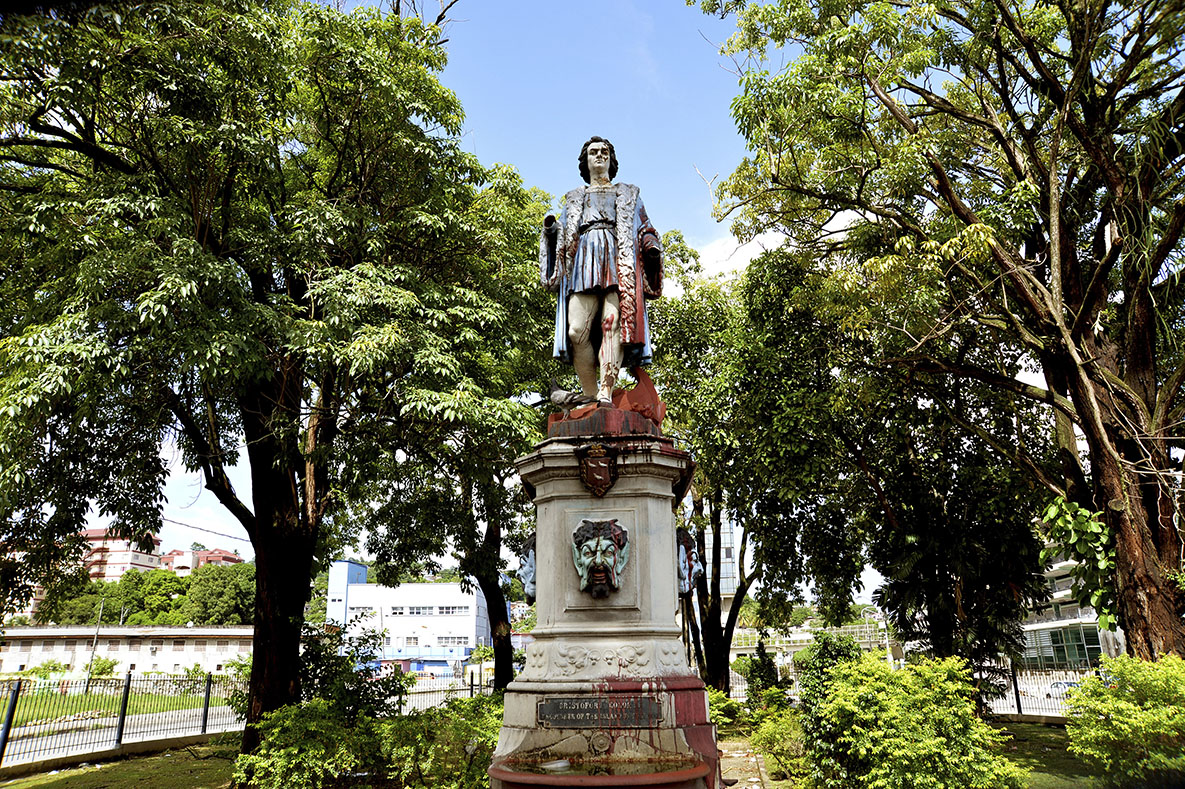Trinidad & Tobago citizens debate what to do with statues of Columbus and other colonial-era figures
CHRISTOPHER COLUMBUS and other colonial-era figures came under scrutiny in Trinidad and Tobago during a lengthy debate in the capital on Wednesday.
The government had asked residents of the twin-island Caribbean nation if they supported the removal of statues, signs and monuments with colonial ties and if so, how those spaces should be used.
One by one, people of African, European and Indigenous descent stepped up to the microphone and responded.
Some suggested a prominent Columbus statue be placed in a museum. Others requested it be destroyed and that people be allowed to stomp on the dusty remains.
One man encouraged officials to round up statues of colonial figures and create a “square of the infamous.”
The majority of the more than two dozen people who spoke, and dozens of others commenting online, supported removal of colonial-era symbols and names.
“It’s an issue about how after 62 years of independence … we continue to live in a space that reflects the ideals and the vision and the views of those who were our colonial masters,” Emancipation Support Committee chairwoman Zakiya Uzoma-Wadada said.
Trinidad and Tobago is the latest nation to embrace a global movement to abolish colonial-era symbols as it reckons with its past as demands for slavery reparations grow across the Caribbean.
The public hearing was held just a week after the government announced it would redraw the nation’s coat of arms to remove Christopher Columbus’s three famous ships — the Pinta, the Nina and the Santa Maria – and replace it with the steelpan, a popular percussion instrument that originated in the Caribbean nation.
Others pushed for further changes on Wednesday night.
“What the hell is the queen still doing on top of the coat of arms? Please let us put her to rest,” said Eric Lewis, who identifies as a member of the First Peoples, also known as Amerindians.
Trinidad and Tobago was first colonised by the Spanish, who ruled it for nearly 300 years before ceding it to the British, who governed it for more than 160 years until the islands’ independence in 1962.
The colonial imprint remains throughout streets and plazas, with a statue of Christopher Columbus dominating a square of the same name in the capital Port-of-Spain.
The islands’ National Trust calls it “one of the greatest embellishments of our town,” but many opinions differ.
“It’s disrespectful to those who were the victims of him. The people suffered tremendously,” said Shania James as she called for the statue to be placed in a museum.
“His atrocities should not be forgotten.”
But a handful of people dismissed concerns about how their ancestors were treated, including tour guide Teresa Hope, who is black.
“They survived, and I survived, and we will keep on moving,” she said, adding that if the actions of historical figures were scrutinised, “everything would get knocked down.”
Rubadiri Victor, president of the Artists’ Coalition, said his country should instead erect statues and monuments to honour some of the more than 200 Trinbagonians who represent the best of the islands.
“We’re stumbling and tripping over heroes,” he said. “To have produced so much genius, and that lineage is nowhere present in the landscape.”
Among the suggestions of people to honour was Nobel Prize-winning author V S Naipaul; Cyril Lionel Robert James, a historian and journalist and Kwame Ture, who helped spearhead the Black Power movement in the US.
Others suggested that prominent Amerindians and more local women be honoured, including Patricia Bishop, an educator and musician and Beryl McBurnie, a teacher credited with promoting and saving Caribbean dance.
The debate is scheduled to continue soon in the sister island of Tobago, with the government having received nearly 200 submissions overall so far on what it should do.

